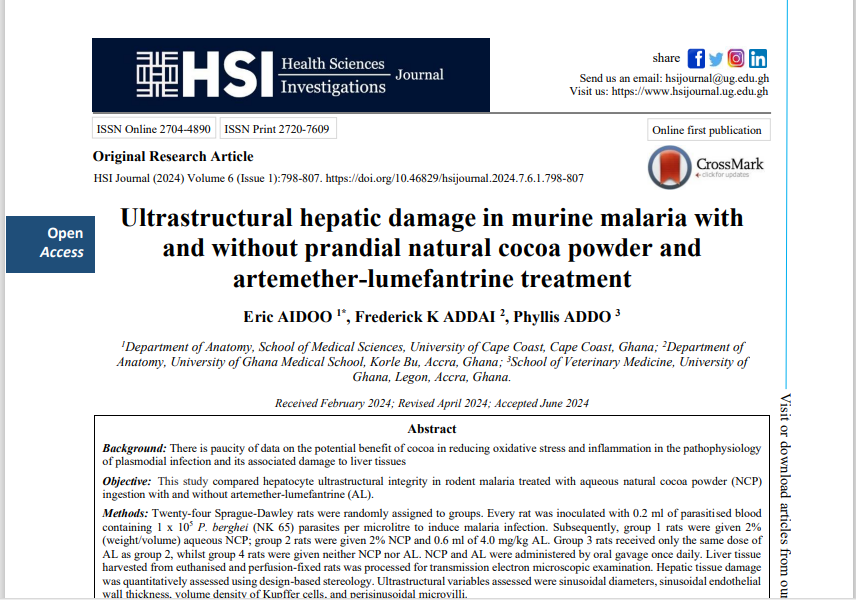Ultrastructural hepatic damage in murine malaria with and without prandial natural cocoa powder and artemether-lumefantrine treatment
Abstract
Background: There is paucity of data on the potential benefit of cocoa in reducing oxidative stress and inflammation in the pathophysiology of plasmodial infection and its associated damage to liver tissues
Objective: This study compared hepatocyte ultrastructural integrity in rodent malaria treated with aqueous natural cocoa powder (NCP) ingestion with and without artemether-lumefantrine (AL).
Methods: Twenty-four Sprague-Dawley rats were randomly assigned to groups. Every rat was inoculated with 0.2 ml of parasitised blood containing 1 x 105 P. berghei (NK 65) parasites per microlitre to induce malaria infection. Subsequently, group 1 rats were given 2% (weight/volume) aqueous NCP; group 2 rats were given 2% NCP and 0.6 ml of 4.0 mg/kg AL. Group 3 rats received only the same dose of AL as group 2, whilst group 4 rats were given neither NCP nor AL. NCP and AL were administered by oral gavage once daily. Liver tissue
harvested from euthanised and perfusion-fixed rats was processed for transmission electron microscopic examination. Hepatic tissue damage was quantitatively assessed using design-based stereology. Ultrastructural variables assessed were sinusoidal diameters, sinusoidal endothelial wall thickness, volume density of Kupffer cells, and perisinusoidal microvilli.
Results: As per the study variables, liver damage in group 1 rats was significantly extenuated compared with rats in group 2, group 3, and group 4. Serum biochemical markers assayed indicated statistically lower levels of aspartate transaminase (AST) and alanine transaminase (ALT) in groups 1,2 and 3 rats compared to group 4 rats. Inferably, mitigation of liver ultrastructural damage in P. berghei-infected rats given NCP was better than treatment with AL and putatively attributable to the anti-inflammatory activity of cocoa evidenced by significantly lower serum transaminases.
Conclusion: The evidence shows that damage to the ultrastructural liver morphology in murine malaria was significantly mitigated by daily ingestion of NCP compared with AL treatment with respect to hepatic sinusoidal endothelial thickness and density of hepatic microvilli despite parasitaemia being comparable to untreated control rats.


